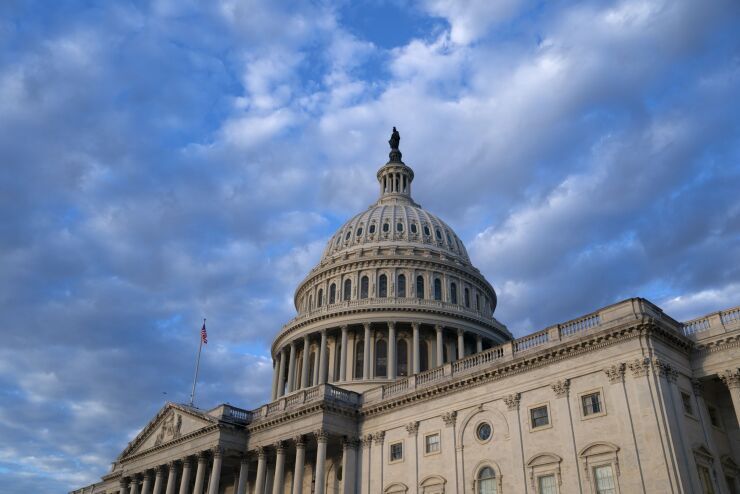Proponents of affordable housing are praising provisions related to the Low-Income Housing Tax Credit in the tax extenders bill that was unveiled this week, saying they could result in financing over 200,000 homes.
On Monday, the leaders of Congress' main tax committees, House Ways and Means Committee Chairman Jason Smith, R-Missouri, and Senate Finance Committee Chairman Ron Wyden, D-Oregon,
Tucked inside the bill are provisions to bolster the Low-Income Housing Tax Credit that originated in the

An advocacy group known as the Affordable Housing Tax Credit Coalition has been lobbying for the inclusion of such measures and praised the LIHTC provisions.
"Congress is taking important steps to address our nation's affordable housing crisis by building on what we know works," said AHTCC CEO Emily Cadik in a statement Wednesday. "The Low-Income Housing Tax Credit provisions included in the bipartisan tax agreement would finance over 200,000 more affordable homes at a time of skyrocketing need, using a bipartisan tool with a nearly 40-year track record of success."
Proponents had lined up support in Congress behind the Affordable Housing Credit Improvement Act last year, with over 200 supporters in the House and 30 in the Senate, equally balanced between Republicans and Democrats. In the 118th Congress, the legislation was led in the Senate by Sen. Maria Cantwell, D-Washington, Todd Young, R-Indiana, Ron Wyden, D-Oregon, and Marsha Blackburn, R-Tennessee, and in the House by Rep. Darin LaHood, R-Illinois, Suzan DelBene, D-Washington, Brad Wenstrup, R-Ohio, Don Beyer, D-California, Claudia Tenney, R-New York, and Jimmy Panetta, D-California.
According to a summary of the tax extenders deal, in calendar years 2018 through 2021, the 9% LIHTC ceiling was increased by 12.5%, allowing states to allocate more credits for affordable housing projects. The provision in the new bill restores the 12.5% increase for calendar years 2023 through 2025 and is effective for taxable years starting after Dec. 31, 2022.
On the matter of the tax-exempt bond financing requirement, under current law, to receive the LIHTC a building must either receive a credit allocation from the state housing finance authority or be bond-financed. To be bond-financed, 50% or more of the aggregate basis of the building and land has to be financed with bonds that are subject to a state's private activity bond volume cap. The provision in the new bill lowers the bond-financing threshold to 30% for projects financed by bonds with an issue date before 2026. It provides a transition rule for buildings that already have bonds issued by requiring a building to have 5% or more of its aggregate basis financed by bonds with an issue date in 2024 or 2025. The provision would be effective for buildings placed in service after Dec. 31, 2023.
In the case of rehabilitation expenditures, which are treated as a separate new building by the IRS, the building is considered to be placed in service at the end of the rehabilitation expenditures period. The 30% requirement is thus applied to the aggregate basis of both the existing building and the rehabilitation expenditures.
"The current tax agreement reflects widespread agreement among Republicans and Democrats that common-sense, public-private partnership solutions are needed to address the nation's housing crisis," said Ryan Sfreddo, president of the AHTCC board of directors and CEO of Red Stone Equity Partners, in a statement. "We are thrilled that momentum is building behind measures to strengthen the nation's most successful and effective tool for addressing the crisis head-on reducing the rental burden being experienced by families and seniors across the country."
The group points out that since 1986, the LIHTC has financed over 3.85 million affordable homes for low-income households, including veterans, seniors, people with disabilities, essential workers, and families with children, through public-private partnerships in urban, suburban and rural communities.





